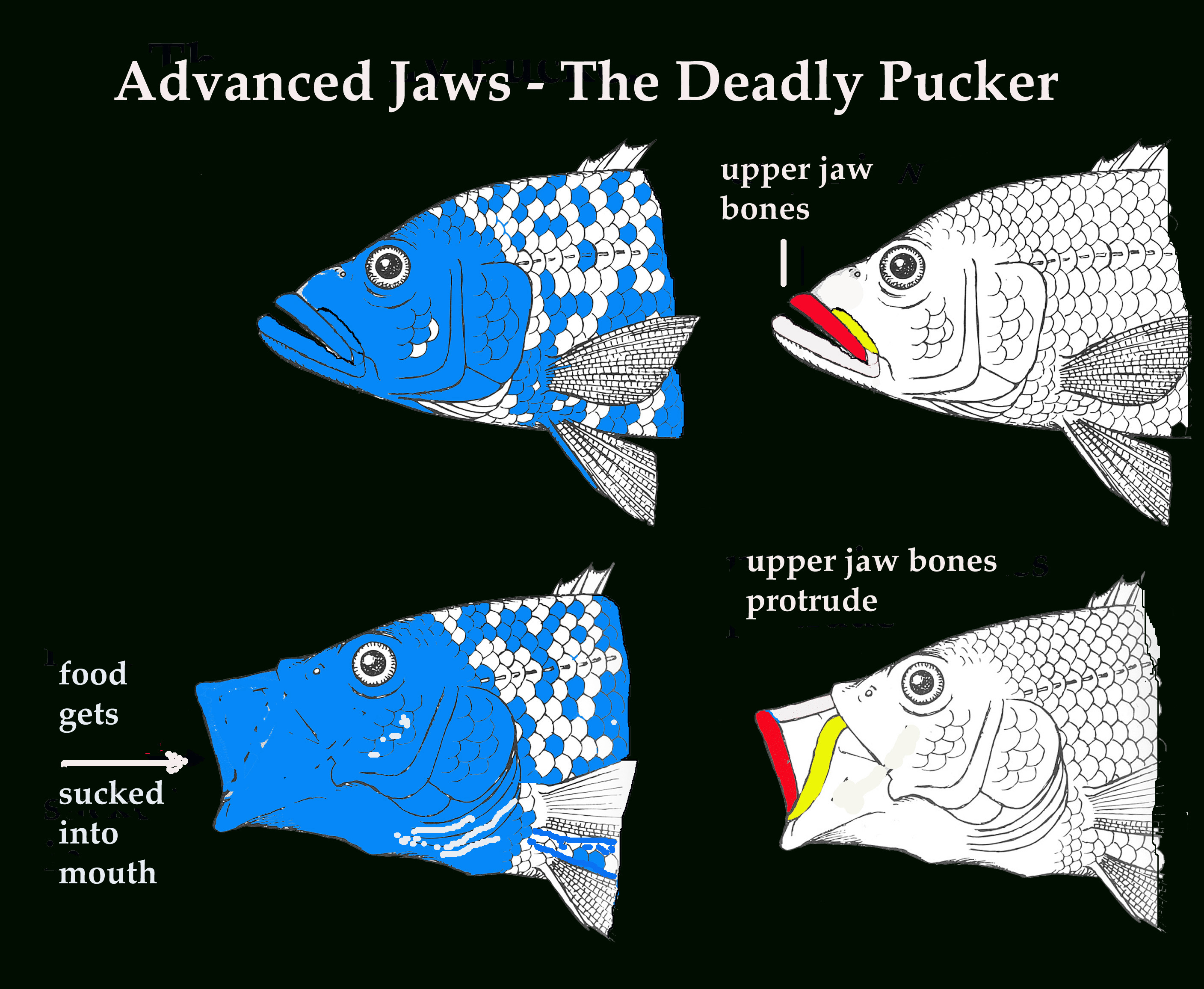 |
| Hey! Your maxilla is showing! |
 |
| The caudal peduncle makes a great hand hold |
So what makes the Teleosts Teleosts? Well, since they are all in the Actinopterygii they all have rayed fins (those little lines you see radiating out through the fins are rays). They all possess a homocercal tail- one that is equal in size top and bottom. Their spines end in the caudal peduncle- my favorite fish part name! The caudal peduncle is what attaches the fish to its caudal fin. This is what you grab onto when you tail a fish. I bet a lot of you have used the caudal peduncle and never knew the name of what you grabbed onto until now. Use it with your friends when landing fish for amusing confusion! “Grab the caudal peduncle!” “The what?”
Now, the characteristic of Teleosts that you have all been waiting for- these fish all have movable jaws. The maxilla and premaxilla are able to protrude from the fish. The pucker! There it is! What an amazing ability that we mostly take for granted! I suspect that I need to explain a bit more about this capability.

The maxilla is the upper jaw bone of the fish and the premaxilla are a pair of small bones that usually carry teeth (we all like fish with teeth right?). When these are able to extend it does some cool things. First the jaws extend out- think of it as the fish version of reaching out to touch someone. The mouth also gets a whole lot bigger. Finally, and potentially most importantly, it lets the fish suck in a bunch of water (very technical there huh?). So maybe it isn’t a classic pucker, but this blog entry gave me the idea for the name. Blame them. Great article though…
 |
| big bass, cute chic |
What does that mean for us fly chuckers? A whole lot actually if you think about it. I am going to use the smallmouth bass as an example. Look at the fish when it is just sitting there. The mouth doesn’t look too big (hence the name). But what happens when the bass goes to eat something? That mouth opens a lot larger than it appears to. As it opens up water rushes into its oral cavity too. It all happens in a split second. The prey item is washed right in. If you have ever fished bass in relatively clear water this is quite apparent. Your fly is swimming along and then WHOOSH, gone in an instant.
Now, for an instant, think about where you probably hook most bass. I find that much of the time it is in the skin just behind the extendable jaw (the maxilla). Because that maxilla is still attached to the fish when it extends, that flesh behind it is fairly thin right? An easy spot to get a hook into wouldn’t you think? Does that help us anglers out a bit perhaps? Darn tootin!
 |
| Kevin's slab rock bass |
Here is something else to think about with these extendable jaws. A fish can now eat much larger prey items. Ever caught a small fish on a big fly? Of course you have. Especially bass and other Centrarchids (the sunfish family of which the largemouth and smallmouth are members… I gotta get going with the name game post too…). I have had it happen with a lot of the Esox genus as well. Next time you have a rock bass in your hands, open up its jaws. Don’t worry, be gentle and the fish will be fine. That little guy can open up his mouth pretty far. That is how they get those little poppers so far back in there making it such a pain in the ass to get them out. They open their mouth and suck that popper right in. Just an awesome way to feed!
 | |||
| 48" musky- death with fins thanks to that mouth! |
I used to work at a small public aquarium that dealt with fish native to Lake Champlain. We had a pretty small tank, about 10 gallons, and we had a couple of 8 inch pickerel in there. I came in one morning and there was only one pickerel left in there. It was a really fat pickerel too. And he had a tail hanging out of his mouth. That fish was only slightly larger than the other one. The way the jaws open up in members of the Pike family really lets them eat big prey and suck it in. They can, and do eat things that are about 2/3 to ¾ their own length. Obviously they have no issues with being cannibals either. That is why big flies can be a great idea for them too. It is all about that extendable maxilla though… open wide, suck in, and yummy, yummy in the tummy!
I think that it is pretty easy to see what implications that this Teleost adaptation has for this very successful group of fishes. It also seems pretty obvious to me why it really helps out those of us who toss feathers and fur (and flash, and rabbit strips, and hair, and wool and…). It lets these fish grab our flies a whole lot easier and it lets us hook them a whole lot easier too. After catching many bowfin, I can tell you without hesitation that it is much easier to put a hook into the mouth of a bass. And a whole lot easier to get your fingers back intact!
Speaking of that… is anyone interested in learning a bit about dentition? The Tooth Tale shall be coming up soon!
Death with fins... sounds like a rock band.
ReplyDeleteLooking forward to the next post
The Average Joe Fisherman